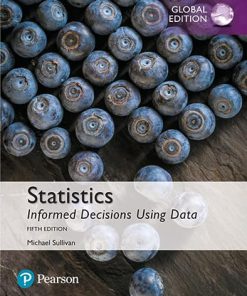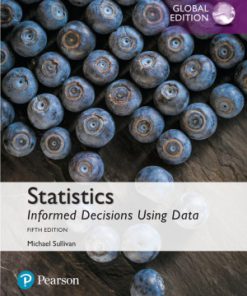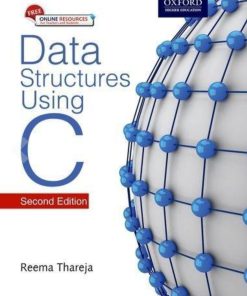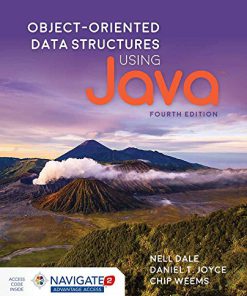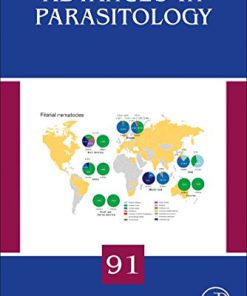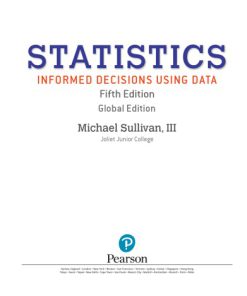Using Geochemical Data 2nd Edition by Hugh Rollinson ISBN 1108745849 9781108745840
$50.00 Original price was: $50.00.$25.00Current price is: $25.00.
Using Geochemical Data 2nd Edition by Hugh Rollinson – Ebook PDF Instant Download/Delivery: 1108745849, 978-1108745840
Full download Using Geochemical Data 2nd Edition after payment
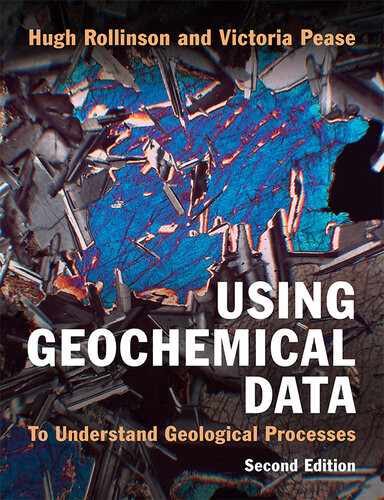
Product details:
ISBN 10: 1108745849
ISBN 13: 978-1108745840
Author: Hugh Rollinson
Using Geochemical Data 2nd Table of contents:
1. Geochemical Data Overview
- Introduction: Focus on geological processes and the role of geochemical data in understanding Earth’s formation and evolution.
- Geochemical Signatures:
- Processes controlling the chemical composition of planetary bodies, igneous, metamorphic, and sedimentary rocks.
- Biogeochemical processes, including the search for early life on Earth.
- Analytical Techniques: Methods like X-ray fluorescence (XRF), mass spectrometry, and ICP-MS are used to analyze samples. Each method has specific applications and limitations.
- Sources of Error: Emphasizes issues like contamination, calibration errors, and peak overlap in geochemical analysis.
2. Analyzing Geochemical Data
- Statistical Approaches: Discusses challenges like small sample sizes, non-uniform errors, and the constant sum problem, along with methods for addressing these issues.
- Methods: Includes correlation analysis, regression analysis, and multivariate methods to interpret geochemical data, as well as the application of ternary and variation diagrams to identify geochemical trends and processes.
- Compositional Data Analysis: Aitchison’s approach to constrained compositional data and its applications.
3. Using Major Element Data
- Rock Classification: Methods for classifying igneous and sedimentary rocks using oxide-oxide plots, normative mineralogy, and cation classification.
- Variation Diagrams: Techniques for recognizing processes such as fractional crystallization, partial melting, and weathering in major element variation diagrams.
- Diagrams for Modeling: Use of experimental and thermodynamic phase diagrams to model mantle and crustal melting processes.
4. Using Trace Element Data
- Trace Elements Classification: Classifies elements based on their geochemical behavior and uses in magmatic systems and economic geology.
- Controls on Distribution: Discusses partition coefficients and the geological factors influencing trace element distribution in igneous rocks, sediments, and accessory minerals.
- REE Patterns: Interpreting rare earth element (REE) patterns in igneous rocks, seawater, and sediments.
- Multi-Element Diagrams: Normalized multi-element diagrams for analyzing igneous rocks, sediments, and HSE/PGE behavior in cosmochemistry and mantle geochemistry.
5. Using Geochemical Data to Identify Tectonic Environments
- Discrimination Diagrams: Use of trace element and major element diagrams to identify tectonic environments for different volcanic and sedimentary rocks, with emphasis on ultramafic, mafic, and plutonic rocks.
- Tectonic Controls: Identifying tectonic settings and the role of geochemical signatures in constraining magmatic and sedimentary processes.
6. Using Radiogenic Isotope Data
- Geochronology: Methods like isochron calculations and model ages to estimate the age of rocks and minerals, including the use of systems like K-Ar, Rb-Sr, and U-Th-Pb.
- Petrogenesis: Use of radiogenic isotopes in identifying mantle and crustal reservoirs and tracing geochemical evolution over time.
- Isotopic Systems: The role of isotopes in studying mantle evolution and crustal differentiation, with the application of different isotopic systems (e.g., Sm-Nd, Lu-Hf) in petrogenetic studies.
7. Using Stable Isotope Data
- Stable Isotopes Principles: Basic principles of stable isotope geochemistry, including fractionation, notation, and equilibrium processes.
- Applications: Uses of stable isotopes of oxygen, hydrogen, carbon, and other elements to study water-rock interactions, mantle processes, and biogeochemical cycles.
- Carbon Isotopes: Carbon isotopes in meteorites, igneous rocks, carbonates, and their role in studying early life on Earth and biogeochemical processes.
This document emphasizes the interdisciplinary nature of geochemistry, integrating analytical techniques, geological processes, and statistical tools to understand Earth’s materials and history.
People also search for Using Geochemical Data 2nd:
rollinson 1993 using geochemical data
using geochemical data to understand geological processes pdf
how to normalize geochemical data
what is multispectral data
do imagenet classifiers generalize to imagenet
Tags:
Hugh Rollinson,Using,Geochemical,Data 2nd
You may also like…
Computers - Organization and Data Processing
Data Smart: Using Data Science to Transform Information into Insight 2nd Edition Jordan Goldmeier
Mathematics - Probability
Statistics Informed Decisions Using Data Global Edition Paperback Sullivan
Mathematics - Mathematical Statistics
Statistics Informed Decisions Using Data Michael Sullivan 9781292157115
Computers - Algorithms and Data Structures
Computers - Programming
Computers - Applications & Software
Mathematics - Mathematical Statistics
Business & Economics - Management & Leadership




